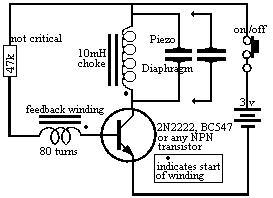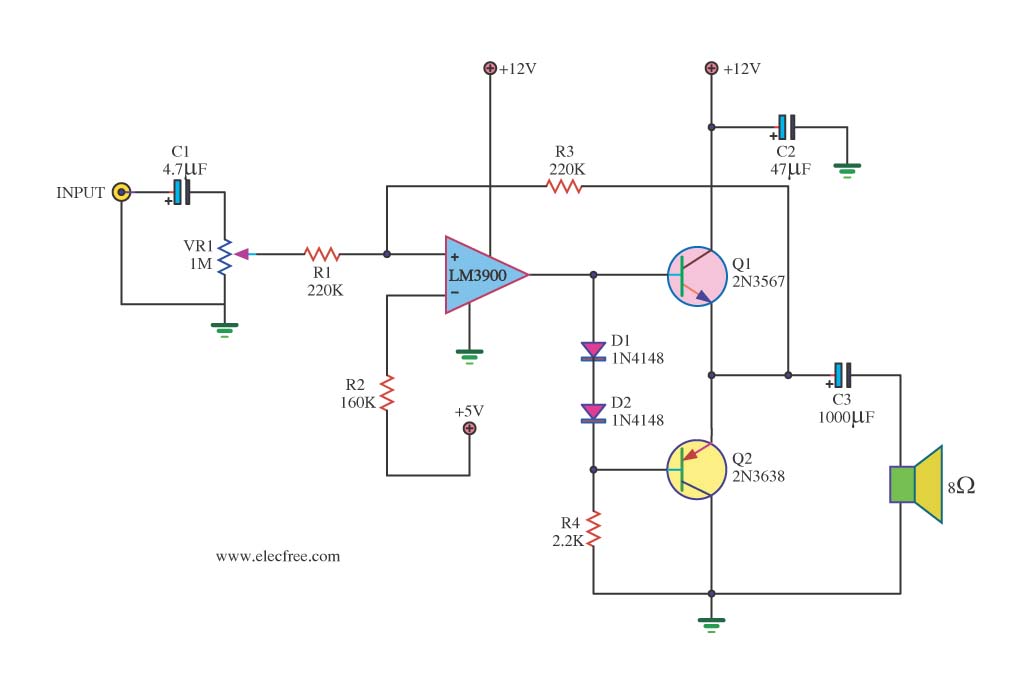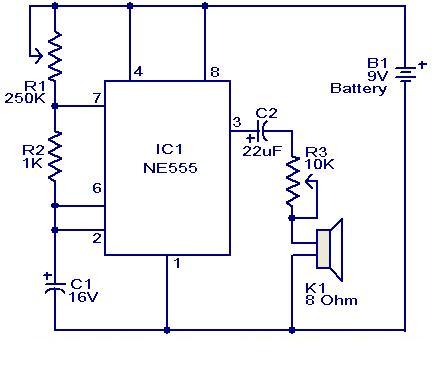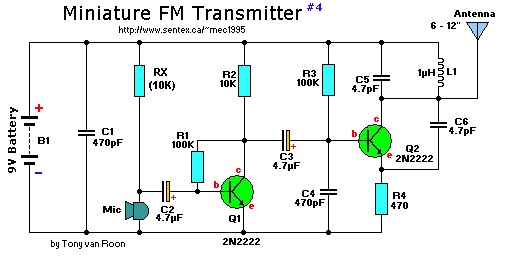
Mini Metronome
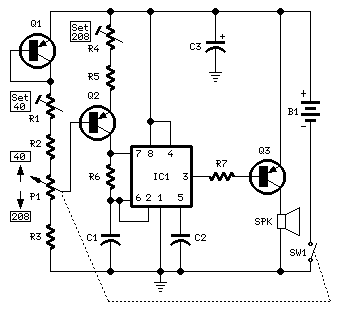
Mark the entire scale with the standard metronome steps as follows: 40, 42, 44, 46, 48, 50, 52, 54, 58, 60, 63, 66, 69, 72, 76, 80, 84, 88, 92, 96, 100, 104, 108, 112, 116, 120, 126, 132, 138, 144, 152, 160, 168, 176, 184, 192, 200, 208.
The described metronome scale involves a series of incremental tempo markings that are crucial for musicians to understand the pacing of their performance. This scale ranges from a slow tempo of 40 beats per minute (BPM) to a brisk tempo of 208 BPM, providing a comprehensive spectrum for practice and performance.
In an electronic metronome circuit, the implementation of such a scale involves several key components. The heart of the metronome is typically a microcontroller, which can be programmed to generate precise timing pulses at the specified BPM. The microcontroller interfaces with a timing circuit that may include a crystal oscillator to ensure accuracy.
The output from the microcontroller can drive a speaker or piezo buzzer, producing audible clicks or beeps at each metronome step. An LED may also be included to provide a visual cue that synchronizes with the audible output. The user interface may consist of buttons or a rotary encoder to allow the musician to select the desired BPM from the defined scale.
The circuit may also feature a display, such as a seven-segment or LCD screen, to show the current BPM selection. Power management components, including voltage regulators and capacitors, are essential to ensure stable operation of the circuit.
In summary, the electronic metronome circuit designed to accommodate the specified BPM scale would integrate a microcontroller, timing elements, audio output components, user interface controls, and power management features to deliver a reliable and user-friendly metronome for musicians.Finally mark the entire scale with the usual metronome steps as following: 40 - 42 - 44 - 46 - 48 - 50 - 52 - 54 - 58 - 60 - 63 - 66 - 69 - 72 - 76 - 80 - 84 - 88 - 92 - 96 - 100 - 104 - 108 - 112 - 116 - 120 - 126 - 132 - 138 - 144 - 152 - 160 - 168 - 176 - 184 - 192 - 200 - 208. 🔗 External reference
The described metronome scale involves a series of incremental tempo markings that are crucial for musicians to understand the pacing of their performance. This scale ranges from a slow tempo of 40 beats per minute (BPM) to a brisk tempo of 208 BPM, providing a comprehensive spectrum for practice and performance.
In an electronic metronome circuit, the implementation of such a scale involves several key components. The heart of the metronome is typically a microcontroller, which can be programmed to generate precise timing pulses at the specified BPM. The microcontroller interfaces with a timing circuit that may include a crystal oscillator to ensure accuracy.
The output from the microcontroller can drive a speaker or piezo buzzer, producing audible clicks or beeps at each metronome step. An LED may also be included to provide a visual cue that synchronizes with the audible output. The user interface may consist of buttons or a rotary encoder to allow the musician to select the desired BPM from the defined scale.
The circuit may also feature a display, such as a seven-segment or LCD screen, to show the current BPM selection. Power management components, including voltage regulators and capacitors, are essential to ensure stable operation of the circuit.
In summary, the electronic metronome circuit designed to accommodate the specified BPM scale would integrate a microcontroller, timing elements, audio output components, user interface controls, and power management features to deliver a reliable and user-friendly metronome for musicians.Finally mark the entire scale with the usual metronome steps as following: 40 - 42 - 44 - 46 - 48 - 50 - 52 - 54 - 58 - 60 - 63 - 66 - 69 - 72 - 76 - 80 - 84 - 88 - 92 - 96 - 100 - 104 - 108 - 112 - 116 - 120 - 126 - 132 - 138 - 144 - 152 - 160 - 168 - 176 - 184 - 192 - 200 - 208. 🔗 External reference


